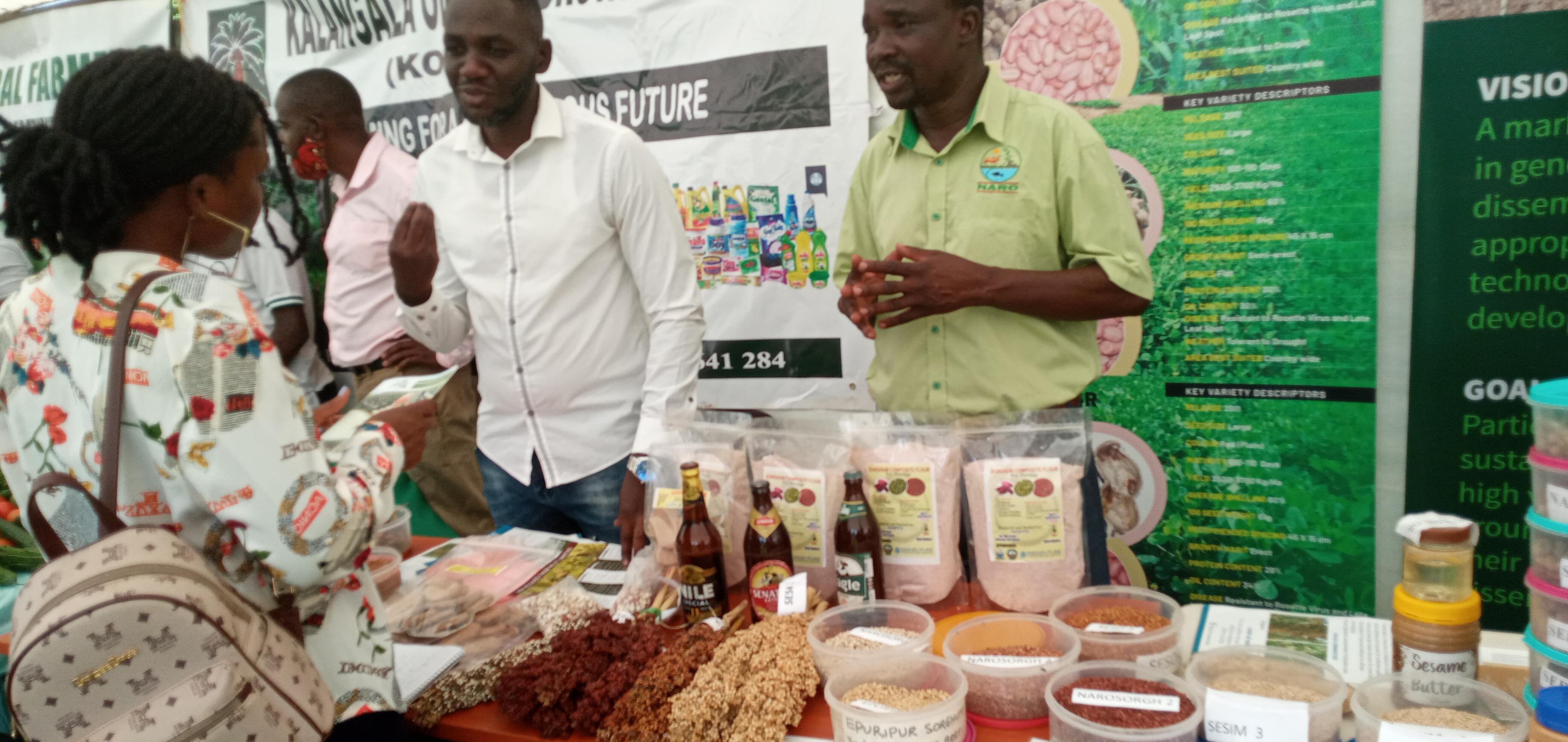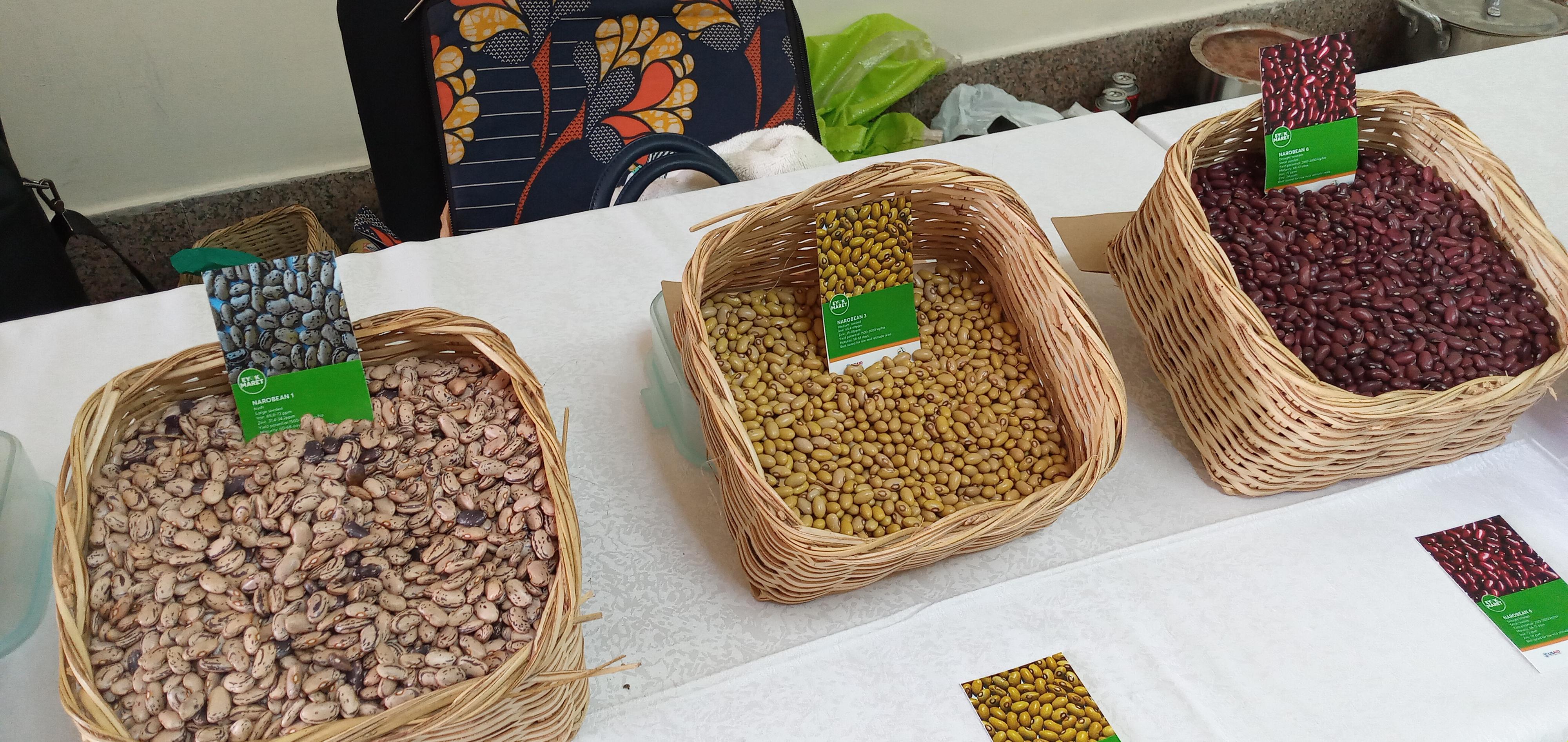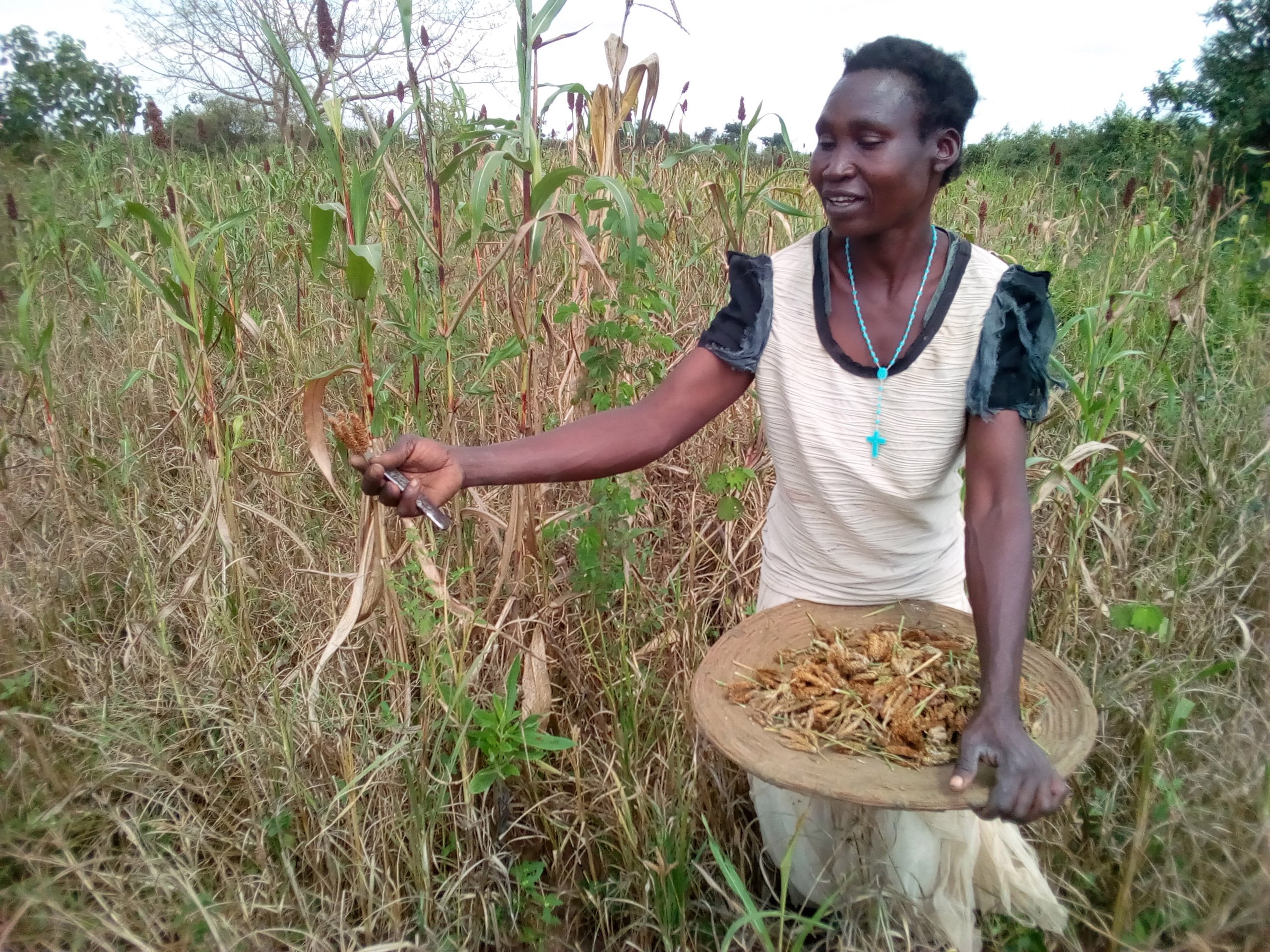Prime
New millet varieties for farmers

Scientists display some of the new millet and sorghum varieties. Photo/Lominda Afedraru
What you need to know:
- Millet and sorghum are more nutritious than other cereals and when malted they are known to be weaning food because they provide energy per feed than those having starch.
Millet and sorghum grains have been cultivated across the world including Uganda for thousands of years and harvested as food security crop.
In Uganda these crops grow well in the eastern and northern parts of the country and farmers have been growing them as food security and income earning crops for their livelihoods.
As such scientists at the National Semi Arid Resources Research Institute (NaSARRI) in Serere have been conducting research in improving varieties of these crops for better yield and to adopt to prolonged drought conditions.
Background
Finger millet is an important staple food in Eastern Africa including Uganda.
The same applies to sorghum and the two cereal crops are known to be indigenous to Uganda.
These crops are more nutritious than other cereals and when malted they are known to be weaning food because they provide energy per feed than those having starch.
They are grown in almost all agro ecological zones but the farmers in the eastern and northern parts of the country grow it most because it the main stable food used for porridge and solid food accompanied by any source.
These crops can also grow well in drought stricken areas such as the Karamoja region.
Therefore the scientists at NaSARRI over the years have been breeding varieties of the two crops to improve its yield and resistance to drought and pests and diseases.
They concluded their research and released the latest varieties in 2020 with the main aim of sensitising farmers particularly Karamoja who consume a lot of these crops but are not aware that they can add value to them for nutrition uptake.
Varieties
Faizo Kasule a research associate and cereals plant breeder at NaSARRI explained that his team came up with the concept of developing finger millet, perl millet and sorghum varieties to help solve the food insecurity challenge in the Karamoja region.
This is because the region depends on these crops but farmers have limited knowledge about their agronomy and how to add value to the harvested products.
This is a collaborative research conducted with the International Crops Research Institute for the Semi-Arid Tropics (ICRISAT) involving three countries Uganda, Zambia and Botswana.
Finger millet varieties
The released varieties include NAROMILL 1 which is dark tan in colour with yield potential of 3 to 4.1 tonnes, per hectare. It grows in a duration of 100 days and it is resistant to leaf blast disease, it is easy to thresh and it is rich in protein 9.8 percent and 0.6 percent calcium. It is highly suitable to value addition.
NAROMILL2 is whitish in colour and its yield potential 293-407 tonnes per hectare and it grows in duration of 102 days. Its protein content is 12.2 percent and it is tolerant to drought.
NAROMILL3 is also whitish in colour and its yield rate is 27-44 tonnes per hectare growing in a duration of 110 days. Its protein content is 10.5 percent and the Iron rate 88.44mg per kilogramme and it is tolerant to drought.
NAROMILL4 is white in colour and its yield potential is 28-37 tonnes per hectare growing in a duration of 85 days. It protein content is 7.9 percent and its good for malting and its drought tolerant.
NAROMILL5 is white in colour and its yield potential is 26-35 tonnes per hectare and it grows in a duration of 100 days. It is nutritionally rich in protein of 12.2 percent and it’s good for brewing.
All varieties are resistant the leaf blast disease and tolerant neck and finger blast disease.
These are diseases which cause blister on the millet leaf leading to withering of the plant.
Sorghum varieties
The sorghum varieties include NAROSORG1 which is cream white seeded in colour, good for industrial brewing and its flour is good for making confectioneries, such as cakes, doughnuts, bread and cakes. Its composite flour is good making porridge for the elderly, pregnant mothers and babies.
It is also suitable for forage for animals. It is tolerant to striga and it is early maturing taking 100 days to grow. It yield potential is 2800 kilogrammes per hectare.
NAROSORG2 is good for blending food products, it is good for local brew and has minimal bird damage, tolerant to striga. It is red seeded and yield rate is the same as above.
NAROSORG3 is good for larger beer production as well as for blending food products. It also suitable for animal forage and resistant sorghum insect pests. Its yield potential is 2500- 3000 kilogrammes per hectare. Its chalky white and its optimal production altitude range is 1000-1600.
NAROSORG4 is good for blending food products as well as for local brew such as Bushera, Muramba and Kwete consumed in western Uganda ad west Nile respectively.
It is resist to smut disease, tolerant to striga weed and drought. The yield potential is between 2800 and 300 kilogrammes per hectare and it matures within 95 days.
Value addition
The scientists have already teamed up with farmer groups and food processors in the region who adding value to both millet and sorghum.
They are producing millet and sorghum flour mixed with roasted soy bean mainly for porridge for babies, pregnant women and the elderly.
The millet flour and sorghum flour is also used for bakery by confectionary industries and heighted by the suitable varieties above and already farmer groups have adopted this as income earning initiative.




